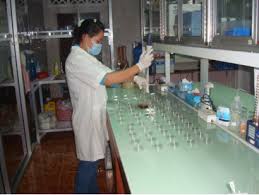Flames, heat, and calories Lab report
Introduction
Visualizing
a good model of heat or energy is tiresome.
Sometimes heat can be perceived in what it does. Scholars believed that when water is heated,
its molecules move at faster velocities and collide with the molecules next to
them faster. Hence, visualizing energy at molecular stage aids in coming up
with a reasonable model of understanding the energy or heat fully. For instance, water exists in two forms
(solid and water). Therefore, their molecular behavior must be different. A good model for water will be that which
accounts for the changes that take place when it is changing from one form to
another. As water liquid converts to solid, much of the energy associated with
its molecules is lost. The loss of the energy makes the frequency of the movement
and collision of molecules to reduce. When melting solid water (ice) by
increasing the quantity of heat, some of the added heat to ice, breaks the
attraction forces that hold water molecules together. The heat that is needed to convert one gram
of ice into liquid water is referred to as heat of fusion. During chemical reactions,
heat is released or absorbed depending on whether the chemical bonds in the
substance are broken or formed. When a
bond is broken, it often cost energy and also the formation of the chemical
bonds needs energy. The energy of bond formation or bond breaking depends on
the relative energy of the bonds. Every
substance requires a specific and measurable quantity of energy to change its
temperature by a given amount. Specific heat is the amount of energy in
calories needed to increase the temperature of one gram of an element or a
compound by one degree centigrade. Flame,
heat, and calories find use in the OSHA and FR clothing (Paraventi 2012).
The
purposes of this experiment were to; explore the concept of heat and calories,
heat gain, heat loss, compare the chemical and physical energy changes. The
last objective was to obtain the amount of energy produced by burning peanut.
Procedure
Heat
loss and heat gain were carried as follows: the mass of Styrofoam cup (2.308
grams) was weighed and then amount cold water was poured into it. The weight of
the cold water together with the Styrofoam cup (37.112 grams) was measured. Hot
water was placed in another Thermo Cup, and the temperatures of cold and hot
water were taken. Then hot water was
poured into cold water and then followed by inserting the temperature sensor
into the mixture. The temperature of the cold and hot mixture was taken when it
was relatively stable. The weight of the
mixture was then recorded and the weight of added hot water obtained by
subtraction. Heat released during the chemical change was performed by;
weighing the candle and piece of the
towel together, followed by putting the candle on a piece of the towel below
the metal cup(the cup contained 100ml of water). The height of the cup was then adjusted to 1
inch above the wick of the candle. The
temperature of the water inside the cup was taken. After the molten candle wax
had been allowed to cool, the weights of the candle were measured to aid in
getting the amount of burned candle. The procedure for heat evolved during the
chemical reaction was repeated by replacing the candle with the peanut.
The
heat released as the result of the physical change was determined by; weighing
Styrofoam cup and adding warm water into it, followed by measuring the weight
of the cup and its contents. The temperature sensor was inserted into the cup
and the temperature taking begun. One-third of 50ml-beaker of was added inside
the cup containing warm water. Then the temperature of the mixture was
monitored while stirring the mixture with the thermometer sensor. The specific heat of the metal (brass) was
performed by taking the weight of the Styrofoam cup, cold water, and the cup.
The temperature of brass was taken before it was transferred inside the cup
containing cold and after it was moved.
Discussion
When
cold water and hot are mixed, the expectant temperature will be of uniform
temperature between hot and cold water temperature extremes. According to the
molecular model, hot water molecules move at faster and collide with cold water
frequently. In the mixture of cold and hot water, a given amount of energy is
transferred from hot water molecules to cold water molecules. This energy is
calculated in the form of heat. For
example, cold water gained was 454.286 calories while the hot water lost was
482.36 calories.
During
the burning of the candle, the quantity of heat evolved was the same as the
amount of heat absorbed by water. In this experiment, the amount of heat given
off by one gram of burning candle was 2300.76 calories. This quantity of heat
liberated by one gram of candle represents the heating capability of the
candle, and it is the measure of the chemical reactions taking place during the
burning of the candle. The amount of
heat given off by one gram of peanut was 4485.17 calories. Heat produced by one
gram of peanut was higher than heat produced by one gram of the candle by
nearly by a half (2184.41 grams).
The
quantity of heat consumed by solid water (ice) is the same as the amount of
heat given off by the hot water. The
heat absorbed by solid water has two components. For instance, the quantity
needed to convert the ice to liquid water at 0 degree Celsius and the final temperature achieved by the
sample. The heat energy between heat
lost by hot water and the heat absorbed by the melted ice is the heat used in
melting the ice. Therefore, the one gram of heat needed to melt ice was 73.506
calories, and it was the heat fusion.
For
this experiment, the value of heat (73.506 calories) required to convert one
gram of ice into liquid was inconsistent with what is in literature (79.7
calories). Hence, the heat of fusion value was not reasonably close to the
accepted value. The specific heat capacity of brass (0.104J/g degree Celsius ) was inconsistent with the accepted value
(0.380J/g degree Celsius) with a percentage
error of 72.63%. The heat loss to the environment associated with the methods
contributed to the errors related to the experiment.
Conclusion
The
energy absorbed by cold water was less than the total amount of heat given off
by the hot water. Therefore, there was heat loss to the surrounding. The
heating ability of peanut was better than that of burning candle. Hence, when
other factors are considered peanut should be applied in heating. The heat energy produced due to chemical change
was higher than heat released as the effect of physical changes. The insulation of the Styrofoam cup during
experiment should be done to minimize the heat loss to the surrounding.
References
Paraventi, M. (2012). OSHA & FR
clothing: How to minimize arc flash injuries. ISHN, 46(1), 36-37.
Retrieved from http://search.proquest.com/docview/919624160?accountid=






Comments
Post a Comment